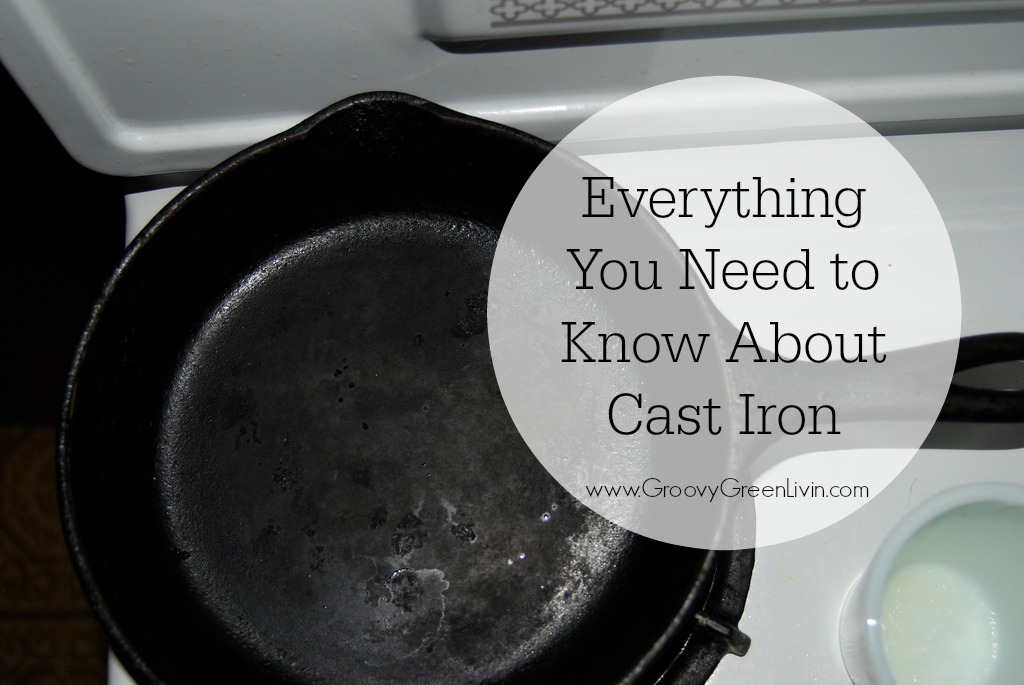I’ve been gradually making the switch to safer pots and pans. Nonstick finishes have come under fire in recent years due to the toxic fumes emitted when the cookware is exposed to high heat. Bye, bye Teflon, hello cast iron and stainless steel.
About a year ago I was sent a Lodge 10-inch cast iron skillet ($14) for review and it rocked my world. Since then I have an arsenal of stainless steel and cast iron in my kitchen. Cast iron certainly has its drawbacks- it’s extremely heavy and cast iron requires a little extra elbow grease to keep it in tip top shape. But I’m finding the pros far outweigh the cons.
Just this past week I invested in a Lodge Cast-Iron Reversible Grill/Griddle ($45) for the top our our range. We’ve been using it for pancakes, pancakes and more pancakes.
Since I’m a newbie when it comes to cast iron I thought I would devote some time to a few cast iron basics.
Why Should I Buy Cast Iron?
Cast iron is the pan that your grandmother used. Cast iron pans keep getting better and better as they age. The more you cook the better they get. These relatively inexpensive pans are virtually indestructible, provided you take care of them. Cast iron pans can be transferred from the stove top right into the oven (or on the grill, or even over the campfire). Also, the seasoning of the pan creates a nonstick surface without the toxic chemicals found in Teflon pans (see below for information on seasoning). Note of caution: Acidic foods like tomatoes, beans, and certain sauces can damage seasoning, and should be avoided until the seasoning is well-established.
What Cooking Tools Should I Use With Cast Iron?
Many cast iron devotees have heard rumors that wooden cooking utensils are the best. This isn’t necessarily true. Stainless steel spatulas
work fine and won’t damage the seasoned pan. If you choose to use metal cooking utensils with your cast iron you might see black flakes in your food. Those flakes are probably pieces of food and shouldn’t be of concern.
How Do I Clean and Season Cast Iron?
Cleaning cast iron is actually very simple.
- After cooking, clean your pan with a sponge and hot water. No need to use soap. Careful not to put a hot pan in cold water-this could causing it to warp or crack.
- TIP: If you are having trouble removing stuck-on food, boil some water in your pan for a few minutes to loosen residue, making it easier to remove.
- Towel dry immediately and apply a light coating of oil while the pan is still warm.
There’s been a video flying around the internet on how to clean and season cast iron. It’s fascinating and involves using kosher salt. Take a look.
What Cast Iron Pan Should I Buy?
Here’s what I have in my kitchen:
- Lodge 10-inch cast iron skillet
($14)
- Lodge Cast-Iron Reversible Grill/Griddle
($45)
- Lodge Pre-Seasoned Skillet, 12-Inch
($36)
On my wish list:
Do you have any cast iron pots and pans? Any tips to share?
P.S. If you liked this post you might enjoy our Groovy Green Livin Newsletter. Receive new posts and special opportunities delivered right to your inbox! Sign up HERE.
Disclosure: Please know that if you make a purchase using a link on this page, I may earn a commission (at no extra cost to you), which in turn helps support this site. None of the companies I promote on this page have paid me, I just really like their products. Thank you in advance.
photo credit: DSC_0331.jpg via photopin (license)

